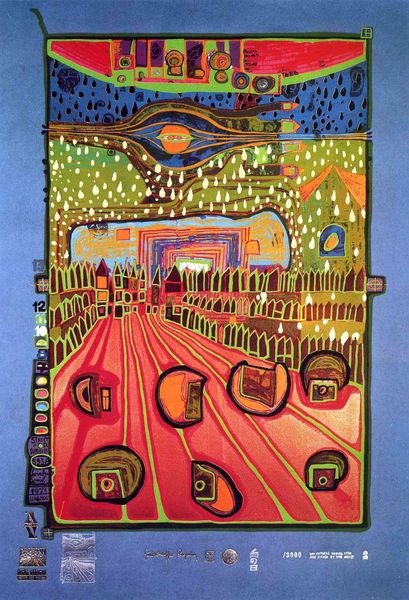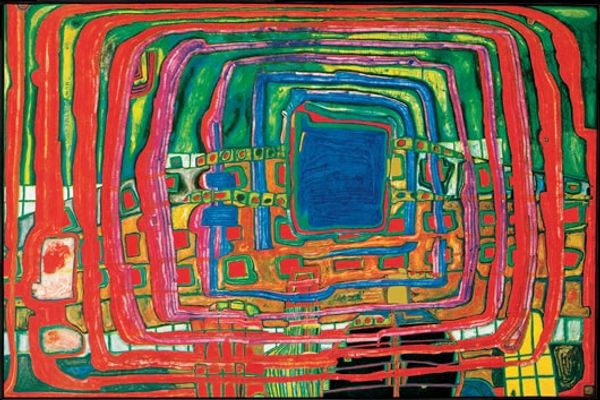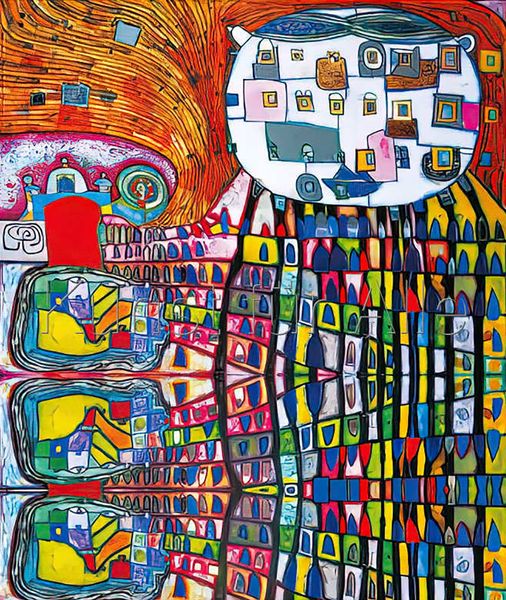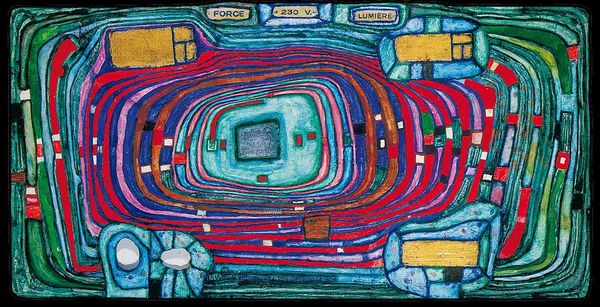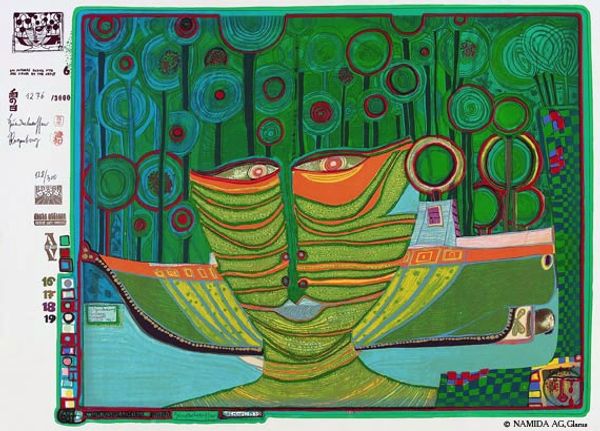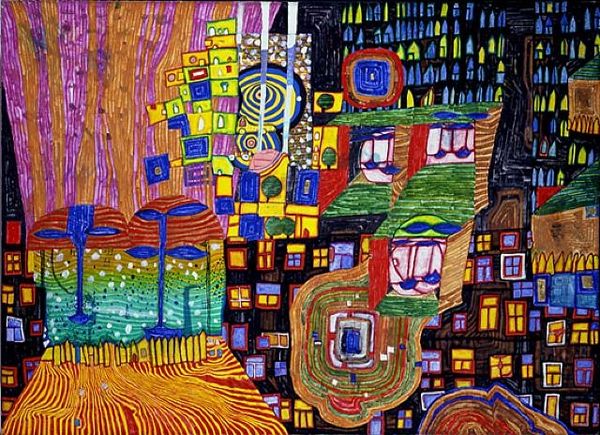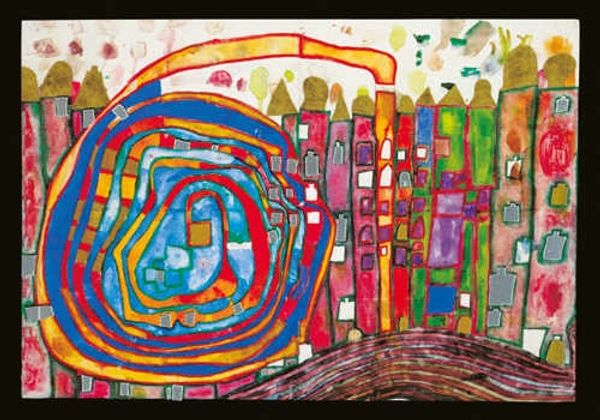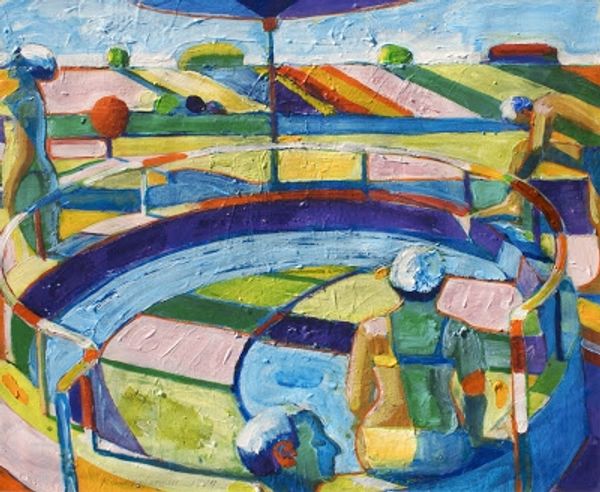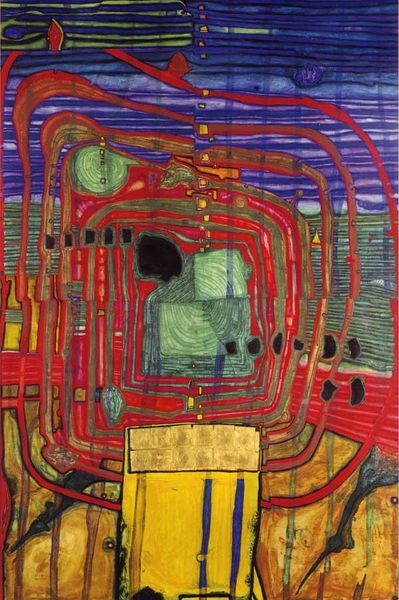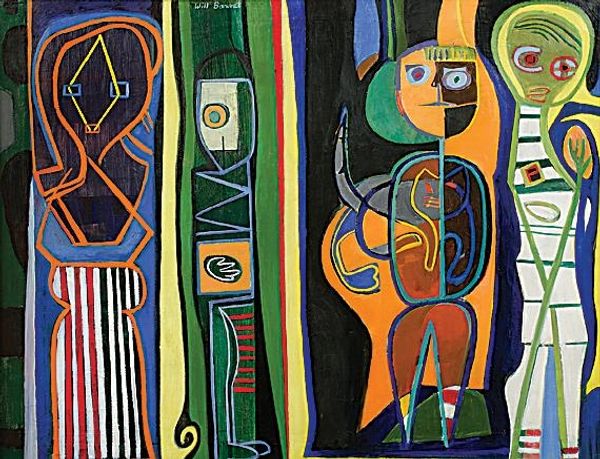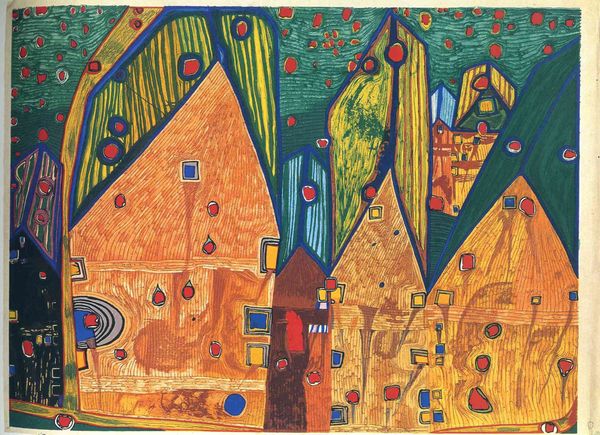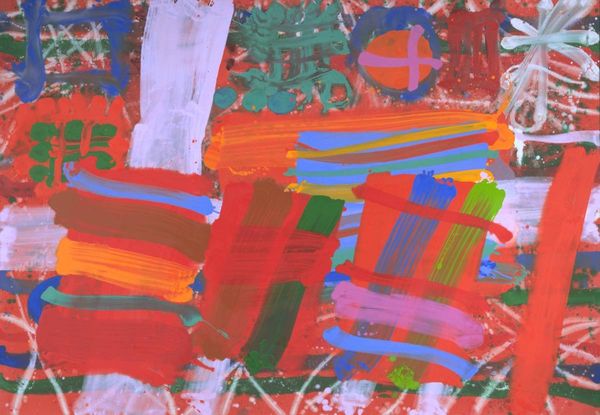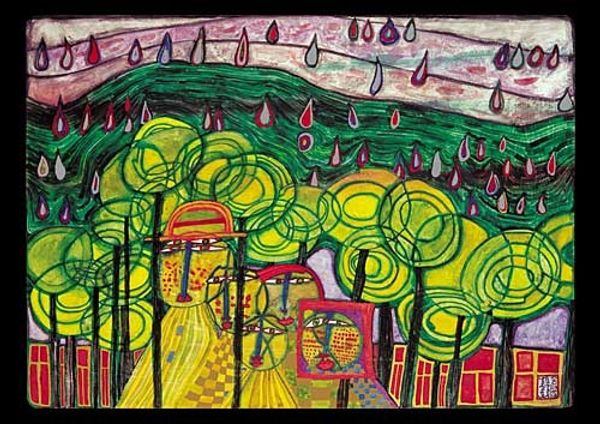
Copyright: NAMIDA AG, Glarus (displayed with the permission of Hundertwasser Non-Profit Foundation) The displayed work of art is protected under the copyright law. In particular, it is not permitted to reproduce, to alter, to print or to publish these works of art. Violations will be prosecuted according to civil and criminal law.
Editor: So this is Hundertwasser’s “738 Grass For Those Who Cry” from 1975, an acrylic on canvas. It has such a vibrant palette, but almost in an artificial, manufactured way. What can you tell me about the materiality of this painting? Curator: It’s crucial to consider Hundertwasser's conscious selection and application of acrylics. While celebrated for their vibrancy, acrylics also represent a shift in art production towards industrial materials, challenging traditional notions of "natural" art. Notice how he uses them to create these flat, almost printed textures. Editor: I see that, the layering almost flattens the image. Why do you think he went in that direction, away from traditional oil paints and their blending abilities? Curator: Consider the socio-political context. The 1970s saw a rise in consumer culture and mass production. Hundertwasser's embrace of acrylics and simplified forms could be interpreted as a reflection, even a critique, of this shift. He’s not trying to hide the artificiality of the paint. The labor is evident but not virtuosic, blurring lines between high art and craft. What does this tension suggest to you? Editor: It almost feels… democratizing? Like art shouldn’t just be about the skill but also about the accessibility of the materials and the message it sends about society itself. It also allows the viewer to appreciate his vision of utopia without requiring access to specialized materials. Curator: Exactly. It’s about deconstructing the myth of the artist as solely a master of technique and foregrounding their role as a social commentator using the available means of production. It's interesting to note that even the "organic" forms are rendered through the medium of mass production. Editor: That gives me a lot to think about. Thanks for expanding my understanding of Hundertwasser's approach! Curator: My pleasure. It's always rewarding to see how material choices can reveal an artist's engagement with the world around them.
Comments
No comments
Be the first to comment and join the conversation on the ultimate creative platform.
